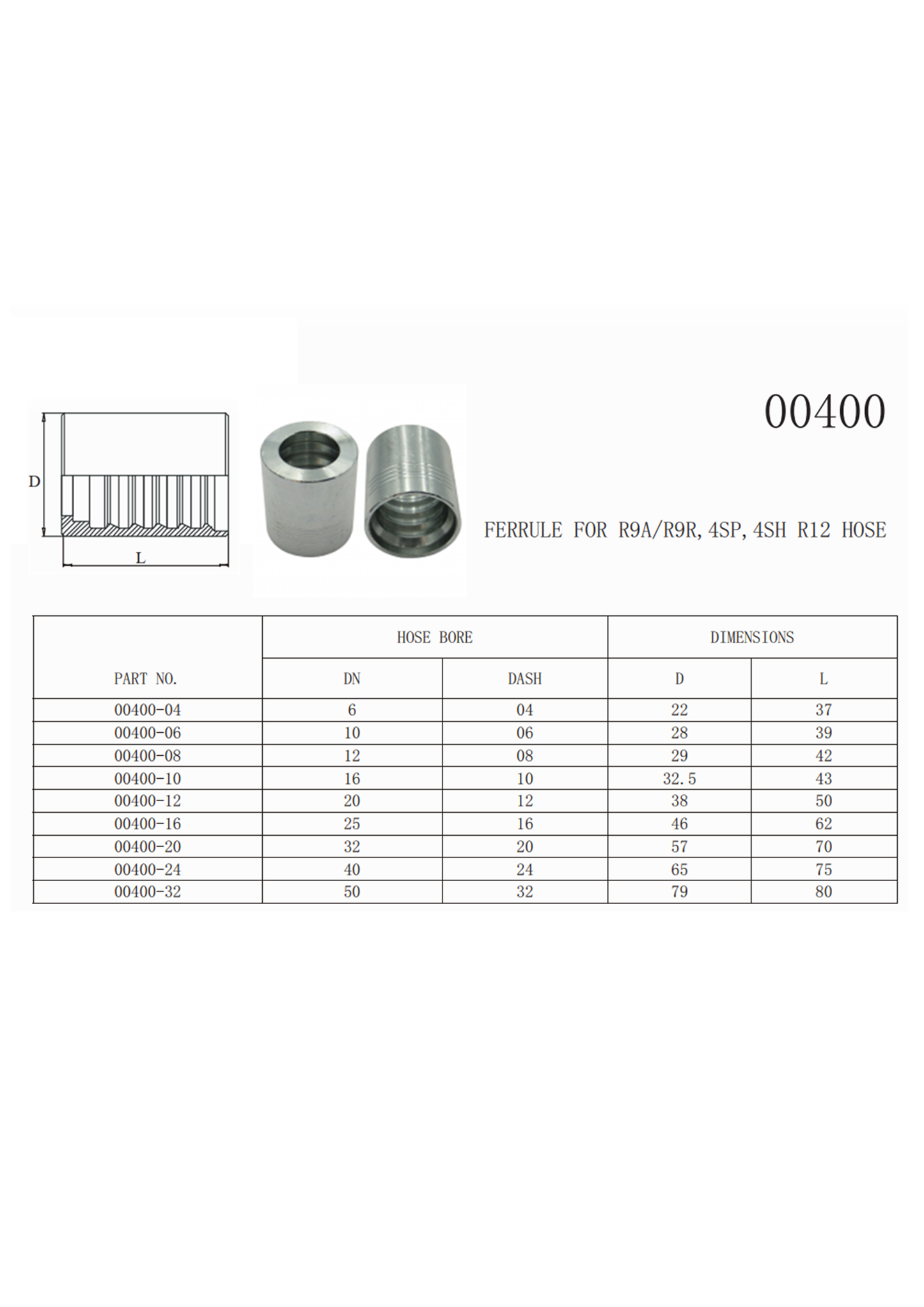TIAN LI HYDRAULIC EUROPE SP. Z O.O.
00400 Skive ferrule for 4SP, 4SH/10-16, R12/06-16 hose
00400 Skive ferrule for 4SP, 4SH/10-16, R12/06-16 hose
Verfügbarkeit für Abholungen konnte nicht geladen werden
00400 Skive ferrule for 4SP, 4SH/10-16, R12/06-16 hose
QUICK OVERVIEW
This particular Skive R9, 4SP, 4SH/10-16, R12/06-16 crimp ferrule is designed for R9, 4SP, 4SH-16, R12/06-16 Hydraulic Hoses
00400 crimp ferrules are typically used in applications where a safe, more durable and reliable clamping method is preferred over band clamps or strapping. When installed properly, crimp ferrules provides a 360° uninterrupted compression around the hose and results in a “clean” attachment with no protrusions. ferrules have smooth, beveled edges and are available in stainless steel or zinc plated carbon steel. They are to be installed with a hydraulic crimper and can be used on most hose shank couplings on the market.
Skive R9, 4SP, 4SH/10-16, R12/06-16 Hydraulic Hose Ferrule based on the length of the coupling barb and the actual hose outside diameter. Ferrule must fit snug over the cover of the hose prior to crimping. As a general rule, ferrule should be about 1/4″ shorter than the barb – if the ferrule is longer than the barb it will start to compromise the structure if the hose is bent near the coupling, and if the ferrule is too short then the barb will dig into the tube and lead to premature failure – therefore it is important to choose the proper length. Remember to replace the seals or o-rings in case of reuse. Different material and custom sizes of this product are available.
Special Note
As with hose and couplings, crimp ferrules are subject to maximum pressures, temperatures, and mechanical forces like end-pull. As a rule, the higher the temperature, the lower the maximum pressure rating for crimp ferrules. Normal operating conditions are -40F to 70/F, above that the crimp ferrule integrity will diminish.
Temperature affects both – the media and the environment. Always test or certify critical application hoses prior to field use.
Aktie






